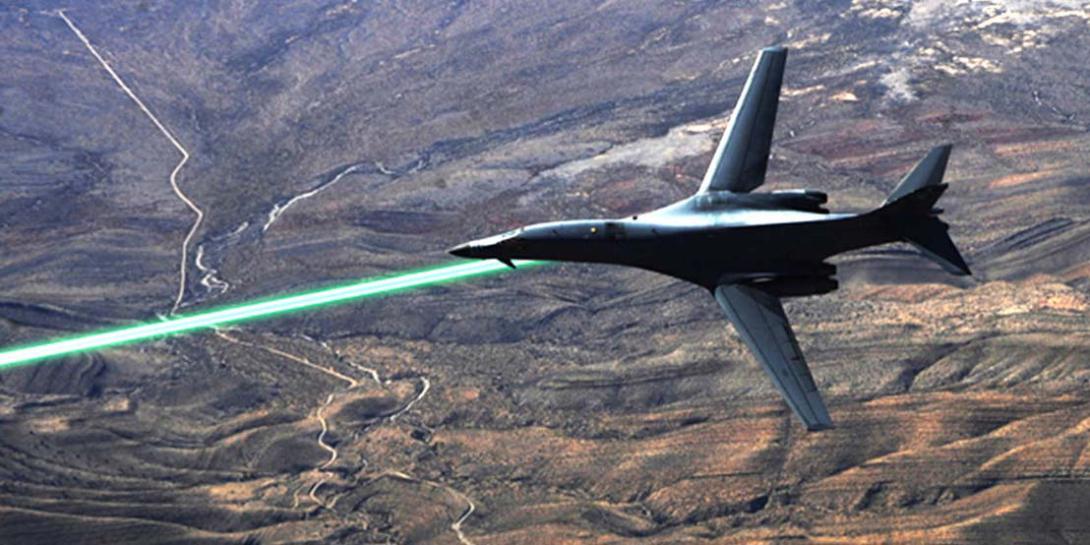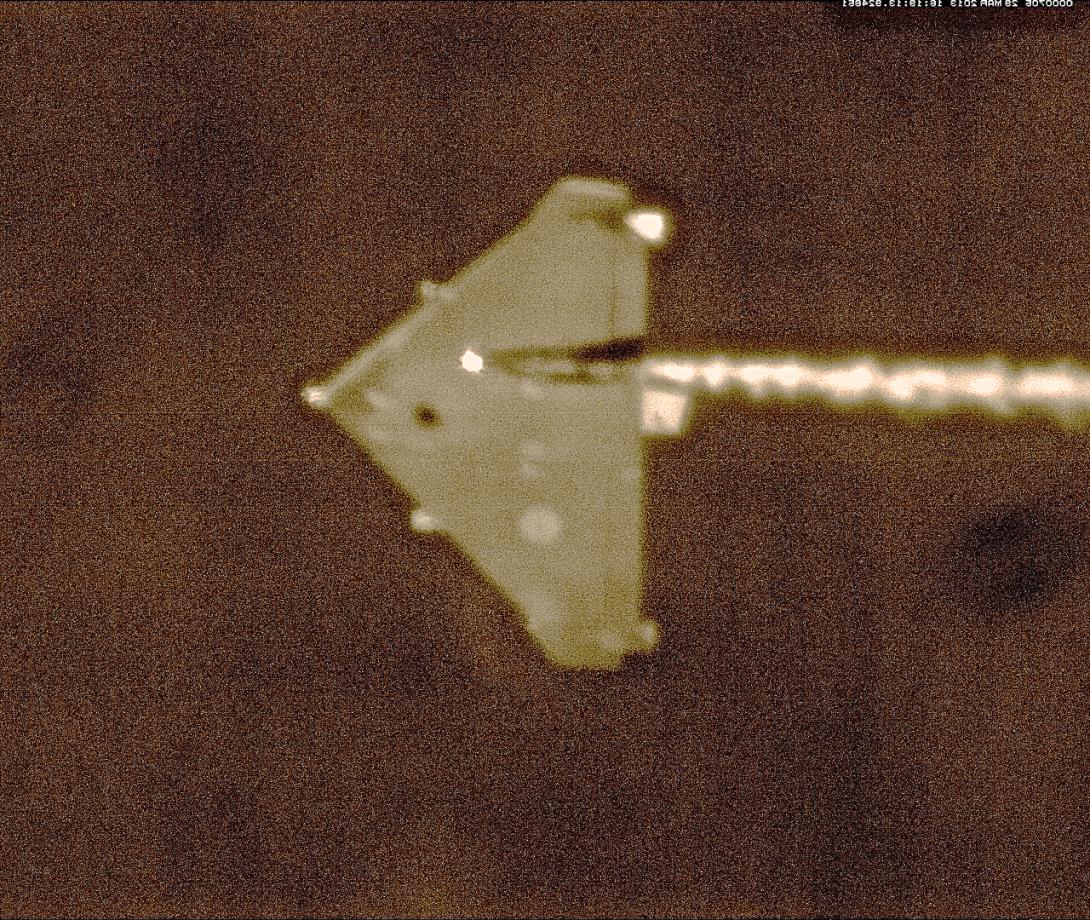The Laser Force Awakens
With every U.S. military service developing battlefield lasers, the technology is poised to deliver on a decades-old promise of a relatively inexpensive weapon with unprecedented precision. Laser weapons will serve multiple purposes, from shooting down unmanned aerial vehicles, missiles, mortars and rockets to interfering with electronics and sensors. Furthermore, they can be adjusted from merely disruptive to deadly.
Various programs across the Defense Department indicate that laser technology could yield benefits from land, air and sea. For example, with the High Energy Laser Mobile Demonstrator (HEL MD) program, Army officials intend to demonstrate a 100-kilowatt laser on a tactical vehicle by 2022. The Marine Corps plans a similar ground-based system. The U.S. Air Force intends to demonstrate laser weapons on fighter jets in the same time frame. The Air Force Research Laboratory (AFRL) is teaming with the Defense Advanced Research Projects Agency to develop the High Energy Liquid Laser Area Defense System, which is touted as being smaller and lighter than similar tactical lasers. Air Force Special Operations Command officials want a laser cannon for the AC-130 gunship, and the Air Force is exploring ultra-short pulse laser (USPL) technology for its potentially disruptive effects. The Navy, meanwhile, already has integrated a Laser Weapon System prototype onto the USS Ponce, which now serves as a floating test bed and proof-of-concept vessel.
Richard DeFatta, director of the U.S. Army Space and Missile Defense Command’s Air and Missile Defense Directorate, says that for the Army, the time is right for laser armament. “It’s very significant from the Army perspective. With lasers, you’d be providing the commander on the ground a weapon that’s very flexible, and it’s an inexpensive match for threat systems,” DeFatta says.
Officials from multiple services tout the cost savings laser weapons could provide. Navy officials estimate the Laser Weapon System costs less than $1 per shot. DeFatta equates HEL MD’s costs to the price of fuel powering the laser platform. “An objective with a laser system is to allow, in real simple terms, a low-cost engagement. If you’re talking about the amount of energy required per shot against a target, it requires only what fuel is needed to put electricity into the system. For less than 30 bucks or so, you can kill a target,” DeFatta explains. “We understand how to do rockets and missiles, and we know what the costs of those are.”
He adds that HEL MD will provide an on-the-move capability and has a “deep magazine,” meaning it doesn’t run out of ammunition as long as it has power. Additionally, the laser could serve other purposes. “If you have a laser system in the field, you also then have a persistent sensor. It’s a telescope. You focus the beam, and it can now be used as an observation platform, too,” DeFatta notes.
Laser weapons also simplify logistics and save space on trucks, planes or ships because tons of munitions need not be transported and stored. Furthermore, laser weapons offer different degrees of lethality. “By turning the power of the laser up or down, I can have a variety of effects on a target. I can do everything from dazzling it, meaning I can wave it off, or I can burn a hole in it,” DeFatta states. “If you’re engaging an unmanned aerial vehicle [UAV] from long distance, you can shoot the UAV down, but you can also attack the sensor that’s on it.”
The less lethal option, however, may be less used. “Soldiers like to see things crash and burn,” DeFatta says, laughing. “In a long-range [engagement] against a UAV, you like to see it knocked out of the sky.”
The Army successfully has demonstrated a 10-kilowatt laser capability with HEL MD. To do so, officials purchased and adapted a commercial laser not intended to be used as a weapon. The laser was integrated onto a Heavy Expanded Mobility Tactical Truck, more commonly known as a HEMTT. Officials essentially built a weapon system, including beam control, thermal management and battery power subsystems, around the laser. In a 2013 demonstration, HEL MD successfully engaged more than 90 mortar rounds and several UAVs in flight. During a subsequent demonstration last year, the system shot down more than 150 targets.
In 2018, the Army intends to demonstrate a 50-kilowatt laser under development with Lockheed Martin. In 2022, the service will demonstrate a 100-kilowatt system. Army officials likely will hold a competition to determine who builds the higher-powered weapon.
Officials chose the HEMTT for initial demonstrations because the vehicle is large enough to host larger, more powerful systems as the technology advances. Future iterations, however, likely will be hosted on a different vehicle. “We are now looking at the program transitioning to the vehicle of choice in our program of record, the Indirect Fire Protection Capability program, which uses a Family of Medium Tactical Vehicles chassis,” DeFatta reports.
Meanwhile, the Air Force may have the most laser weapon programs. Air Force officials last year told reporters they intend to demonstrate a laser system on a fighter jet by the end of 2022. In addition, Lt. Gen. Bradley Heithold, commander, U.S. Air Force Special Operations Command, has called for a laser system to be mounted on an AC-130 gunship.
The AFRL also is investigating the possible uses for the USPL as part of the Novel Electromagnetic Weapons Technologies Program. If the technology shows promise, it could ultimately evolve into a program of its own, AFRL officials say.
Most laser weapons in development use solid-state technology, which provides a steady, consistent beam. A USPL system, on the other hand, emits short pulses of light lasting about “a millionth of a billionth of a second,” which is “pretty short,” says Don Shiffler, AFRL’s high-power electromagnetics core technology competency lead, a job title he describes as “a mouthful.”
“An ultra-short pulse laser gives you a train of pulses. Rather than having it stay on continuously, it gives you small bursts of light,” Shiffler explains.
Shiffler and his boss, Kelly Hammett, chief engineer of the AFRL’s Directed Energy Directorate, share a passion for directed energy tech. Shiffler reveals that his daughter’s thesis involves biophysics applications for USPL technology.
AFRL officials are in the early phases of USPL research, and in some ways, they have more questions than answers. “One thing that’s well-known about ultra-short pulse lasers is that when they interact with matter, say, a solid object, they generate plasma,” Shiffler says.
Plasma is one of the four fundamental states of matter, along with gas, liquid and solid. “A good example of a plasma is the gas in your fluorescent lightbulbs. Or the sun. The sun’s a plasma,” he points out.
Generating plasma provides two effects. It produces light and electromagnetic radiation, such as radio frequency or microwave signals. In theory, a USPL could disrupt communications, electronics or sensors rather than burning through and destroying a target. “Basically, you would propagate the laser from a ground- or air-based platform onto a target. Upon the laser interacting with the target material, you might produce some type of electromagnetic energy that would cause an effect,” Hammett offers. “If you’re trying to produce light, maybe you’re blinding or spoofing the target. If you’re producing radio frequency energy, maybe you’re causing some kind of electronics upset.”
Shiffler and Hammett allow that the technology may be useful in countering laser weapons deployed by future adversaries. “I don’t think we know. That’s something we would have to look at,” Shiffler says. The purpose of the research is to determine what effects the technology will have and whether those effects will be useful on the battlefield. “This is something far enough away from being used, say, 10 or 20 years, that we’re really just in an exploratory phase to figure out how we would use it,” Shiffler states.
Anyone who likes to see targets crash and burn may be disappointed in USPLs. “If an ultra-short pulse laser interacts with material, it looks like you stuck a cigarette up against it. It leaves a black spot. It’s not even really a burn mark. Much to the dismay of some of the experimentalists, I can wipe it off with my hands,” Shiffler states.
This is not the first time the military has developed laser weapons, DeFatta points out. “We were shooting stuff out of the sky as a service in the 1970s, but they were gas dynamic lasers or chemical lasers, which have a logistical trail that’s more difficult,” he says.
The former Airborne Laser program is perhaps the best known chemical laser. Specifically, it was a chemical iodine oxygen laser installed on a Boeing 747-400F. It was designed to counter tactical ballistic missiles in the early boost phase of launch. Although the system successfully shot down targets during demonstrations, it was deemed too expensive and impractical and lost funding.
Advances in solid-state technology, however, have brought lasers to the cusp of reality. “We’re taking advantage of solid-state technologies that 10 years ago were just a promise,” DeFatta asserts.
Researchers still seek to understand the physics of USPL technology, but that is not an issue for solid-state systems. “It’s more engineering than physics right now,” DeFatta concludes.
U.S. military officials across the services are developing laser armaments for air, land and sea combat.






Comment
Ultra Short Pulse Laser
The Air Force may indicate that much isn't known about Ultra Short Pulse Lasers (USPL). But the technology along with effects on material are well known. Pulse lengths of microseconds, nanoseconds and femtoseconds are very common. On the other hand, people with the exact information on how to affectively weaponization USPL are very few.
Using USPL to engage targets at great distance is preferable to using a continuous wave laser. I suspect this may be a strong interest for the Air Force. Considering the Air Force is still pushing the idea of engaging ballistic missiles in the boost phase.
Comments